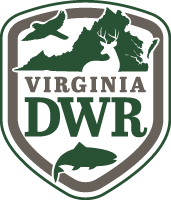Description
Elevation: 2029 ft.
Located in the heart of Blacksburg, the Virginia Tech campus offers a multitude of habitats that house a diversity of wildlife. In addition to small sections of hardwood forest, this site offers open fields, several ponds, and flowing creeks. The Duck Pond, located near Historic Smithfield, is an excellent spot to find green and great blue herons, as well as black-crowned night-heron. Red-eyed vireo and northern flicker can be found in prolific numbers taking summer residence in the surrounding trees. However, this site may be best during migration and in the winter. Shorebirds such as greater yellowlegs, least and spotted sandpipers may be found here during the fall. Wintering waterfowl can include ring-necked duck and bufflehead. Other winter visitors to the campus pond in years past include American pipit and common snipe. Spring migration can be fruitful, as well, producing migrant warblers, vireos, and flycatchers such as willow flycatcher. In summer, the Duck Pond is a good study site for damselflies. Look along weedy edges and shrub-lined banks for eastern red damsel, blue-fronted and variable dancers, fragile and Rambur’s forktails, and familiar bluet. The tiny eastern amberwing dragonfly is abundant on this pond.
Historic Smithfield, built in 1774 by Colonel William Preston, is a beautifully restored house next to the Virginia Tech Campus. The house is open to the public for tours and is surrounded by wonderful grassland habitat. William Ballard Preston, the grandson of Colonel Preston, is the namesake of Preston and Olin Institute, from which Virginia Tech later evolved. There are trails in place throughout the campus, extending outward to less urban communities, with plans to further develop the trail system. While common city birds such as American robin, blue jay, and northern mockingbird may make up the majority of a bird list, keep an eye out for unusual visitors. Northern goshawks have wintered on campus, and barn owls have nested in trees uphill from the pond.
Notes:
- Visitors must display a parking permit, utilize the ParkMobile app, pay the daily charge for a pass, or pay for parking using an hourly meter on the Blacksburg campus Monday – Friday 7 am – 10 pm. Click here for more information on parking regulations.
- Historic Smithfield is open for tours Thursday – Saturday 10 am – 3 pm from early April to mid-December. People are welcome to walk the grounds for free any time of year between dawn and dusk. If a private event is taking place at the pavilion, visitors are asked to bypass that area of the property. Donations are appreciated.
Directions
Suggested Campus Parking Area: 705 W Campus Dr, Blacksburg, VA 24060, 37.226583, -80.425827
Historic Smithfield: 1000 Merry Oak Way, Blacksburg, VA 24060, 37.218151, -80.431175
From I-81 near Christiansburg, exit onto US-460 West, continue on US-460 West for 9.0 miles, turn right on to SR 412/Prices Fork Road, turn right onto West Campus Drive, and the suggested parking area is on the right.
To walk to Historic Smithfield from the Duck Pond, take the path along the southern bank to Smithfield Road and follow it for approximately 0.5 to the property.
Location & Directions
View on Google MapsSite Information
- Site Contact: (540) 231-3947, info@historicsmithfield.org
- Website
- Access: Parking Fee (see Notes for more information), Daily, Dawn to Dusk
Birds Recently Seen at Virginia Tech Campus and Historic Smithfield (as reported to eBird)
- Canada Goose
- Mallard
- Mourning Dove
- Belted Kingfisher
- Yellow-bellied Sapsucker
- Red-bellied Woodpecker
- Downy Woodpecker
- Blue Jay
- American Crow
- Carolina Chickadee
Seasonal Bird Observations
Facilities
- Bike Trails
- Fee
- Accessible
- Hiking Trails
- Parking
- Restrooms
- Historical Site

